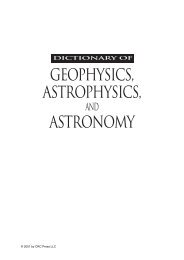tc dokuz eylül university institute of social sciences translation and ...
tc dokuz eylül university institute of social sciences translation and ...
tc dokuz eylül university institute of social sciences translation and ...
You also want an ePaper? Increase the reach of your titles
YUMPU automatically turns print PDFs into web optimized ePapers that Google loves.
who a have simple but an imaginative underst<strong>and</strong>ing <strong>of</strong> the world (Gottlieb, 1997;<br />
218-221).<br />
One may even be tempted to assume that every instance <strong>of</strong> wordplay<br />
<strong>translation</strong> is a strictly unique product <strong>of</strong> coincidence <strong>and</strong> inspiration, <strong>and</strong> therefore<br />
basically unaffected by the conventions, norms, rules or ideologies that so manifestly<br />
seem to influence <strong>translation</strong>al behavior when there is no wordplay about (de Vries<br />
& Verheij, 1997; 91).<br />
II. Descriptive Translation Studies<br />
A. Norms in Descriptive Translation Studies<br />
The notion <strong>of</strong> ‘norms’ was first introduced by Gideon Toury – an Israeli<br />
scholar – <strong>and</strong> the impulse for Toury’s study came from the Polysystem approach<br />
developed by Itamar Even-Zohar. Toury introduced ‘norms’ in the late 1970s to refer<br />
to regularities in <strong>translation</strong> behavior within a sociocultural situation. Then during<br />
the 1980s <strong>and</strong> 1990s it became more influential. Toury deals with what <strong>translation</strong><br />
behavior consists <strong>of</strong>, rather than dealing with what it should consist <strong>of</strong> through<br />
examinations <strong>and</strong> evaluations. The concept <strong>of</strong> norms assumes that the translator is<br />
engaged in a decision making process. Translational activities should be regarded as<br />
having cultural significance. So, being a translator means being able to play a <strong>social</strong><br />
role in order to fulfill a function given by the community rather than transferring<br />
sentences from one language to another, <strong>and</strong> s/he should do it in a way that is<br />
appropriate within that community. The prerequisite for becoming a translator in a<br />
community is to acquire a set <strong>of</strong> norms after finding out what is appropriate<br />
<strong>translation</strong>al behavior in this community (Toury, 1995; 53). However, Toury says<br />
that norms are a category <strong>of</strong> descriptive analysis, but not a category <strong>of</strong> prescriptive<br />
analysis.<br />
In the case study part, descriptive <strong>translation</strong> studies will be used in order to<br />
explain the <strong>translation</strong> phenomenon in Alice in Wonderl<strong>and</strong>. Before analyzing the<br />
translated examples comparatively, it is really necessary to explain the concept<br />
norms <strong>of</strong> Gideon Toury in a detailed way.<br />
The question that led Toury into research is not whether a <strong>translation</strong> is the<br />
equivalence <strong>of</strong> the source text or not. What he wanted to describe is the type <strong>and</strong><br />
28
















